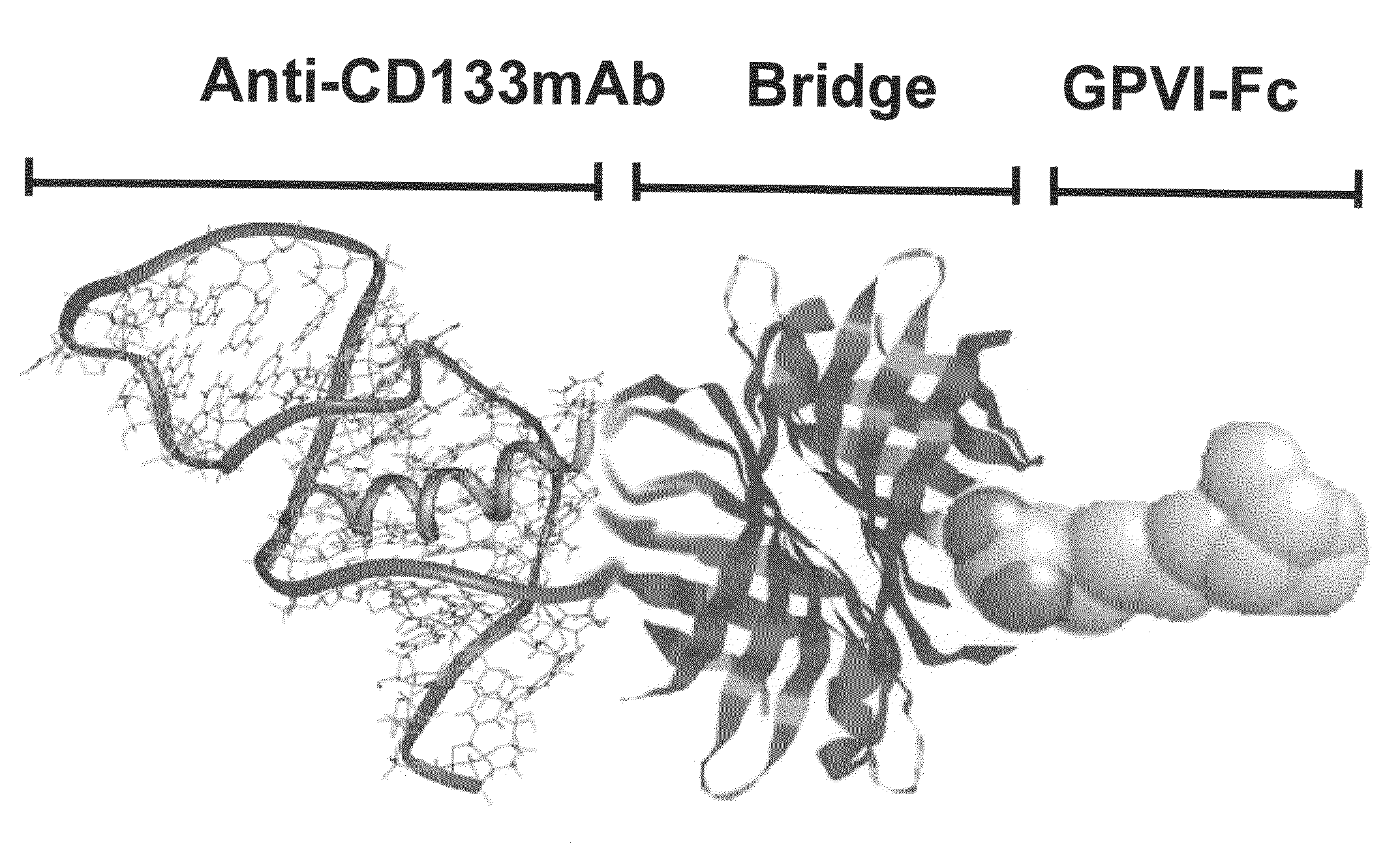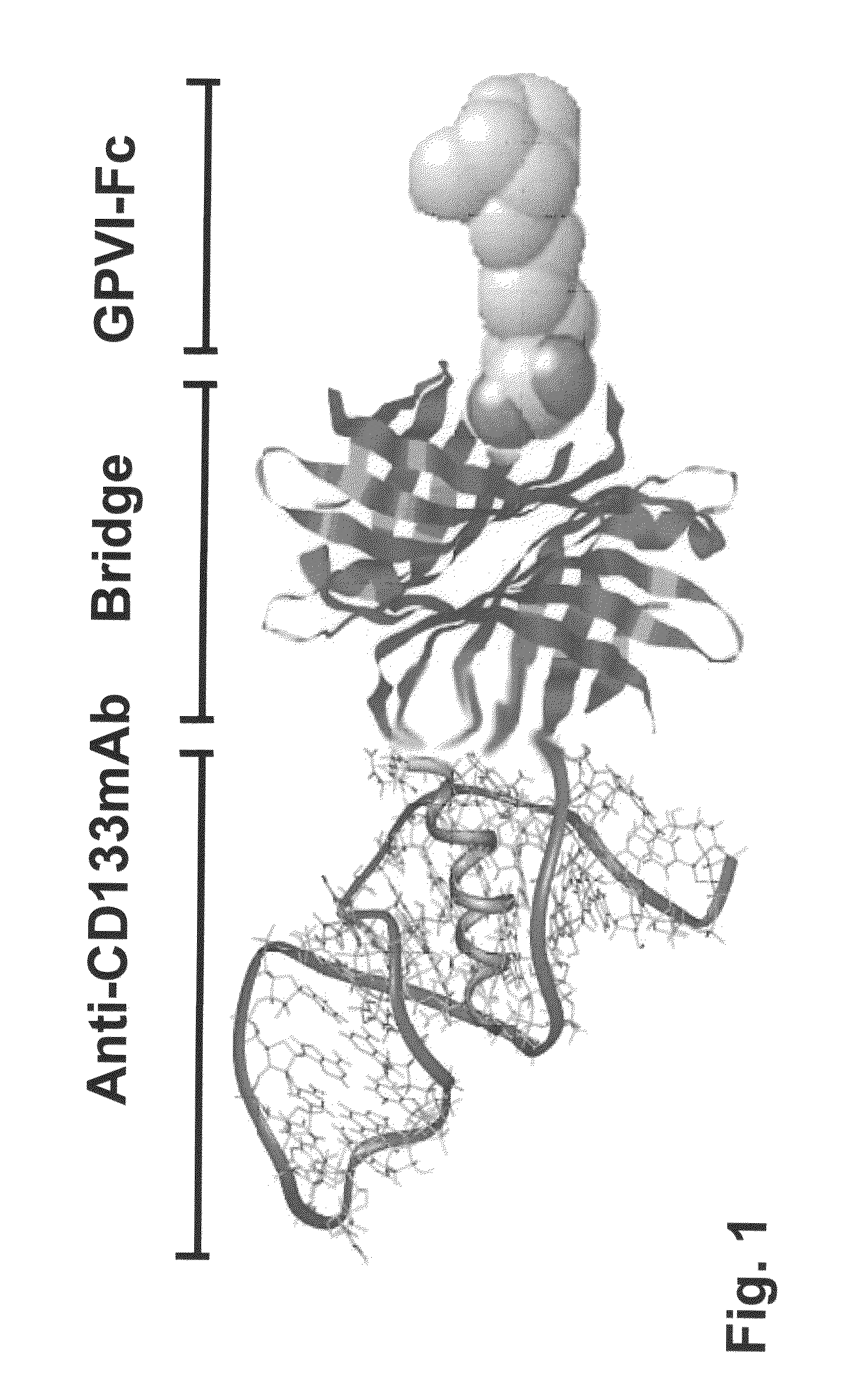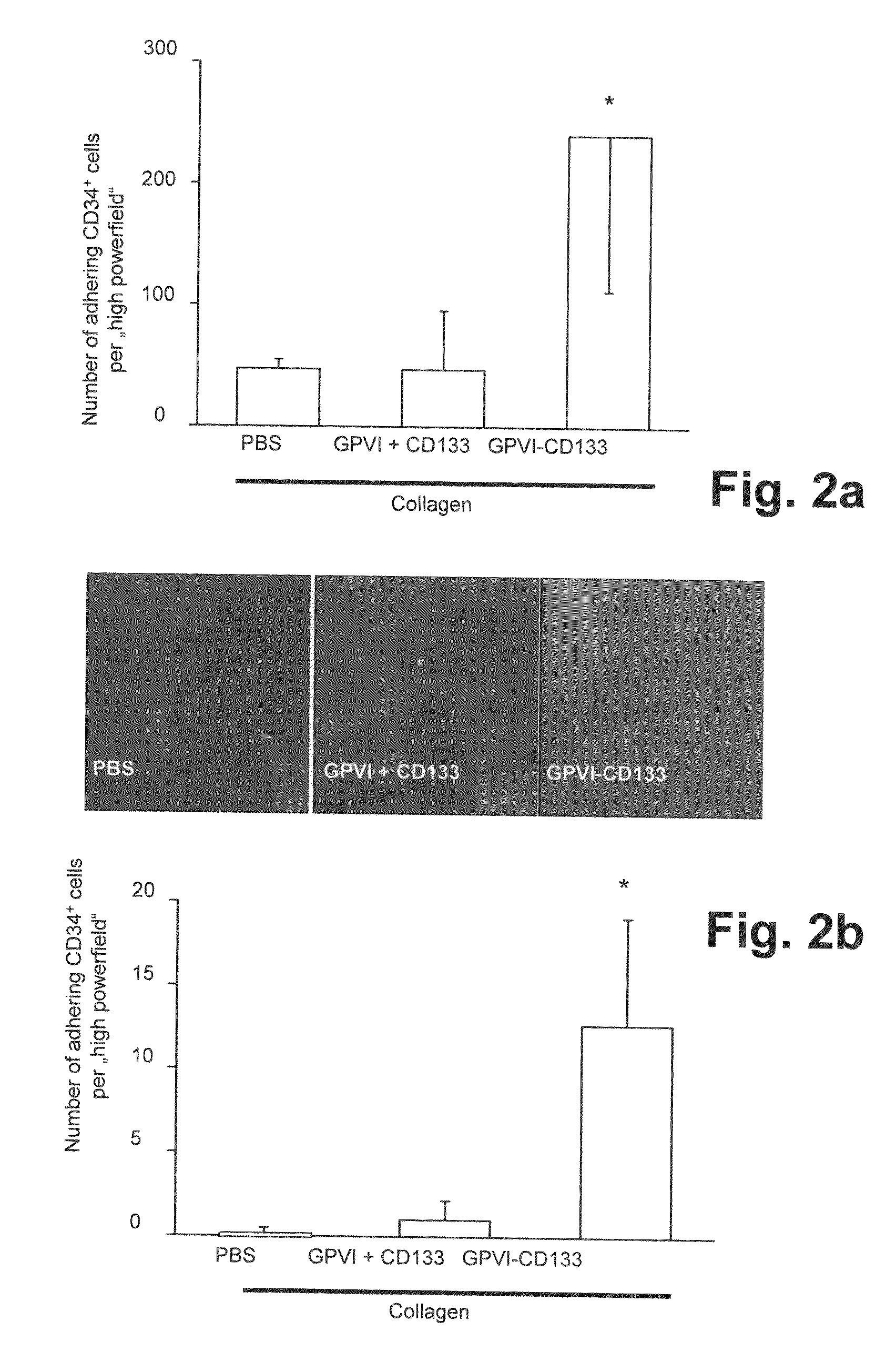Bispecific fusion protein having therapeutic and diagnostic potential
a fusion protein and bispecific technology, applied in the direction of fusions for specific cell targeting, antibody medical ingredients, drug compositions, etc., can solve the problems of reducing the integrity of the vessel wall, and reducing the blood supply to the tissue, so as to prevent the erosion of arteriosclerotic plaques and maintain the integrity of the endothelial body
- Summary
- Abstract
- Description
- Claims
- Application Information
AI Technical Summary
Benefits of technology
Problems solved by technology
Method used
Image
Examples
example 1
Preparation of a Bispecific Protein / Monoclonal Antibody Construct for Recruiting of Bone Marrow Stem Cells to Vessel Lesions
Material and Methods
Reagents
[0066]Biocoll separating solution was obtained commercially from Biochrom AG (Berlin, Germany), and EBM as “BulletKit” (EGM) from Cambrex Bio Science (East Rutherford, N.J.). Collagen I, collagen III, laminin, vitronectin, fibrinogen and fibronectin were obtained commercially from BD Sciences (Heidelberg, Germany), human VEGF from PeproTech Inc. (Rocky Hill, N.J.), and the primary mouse antibody anti-vWF and the phalloidin-AlexaFluor 488 from Chemicon (Temecula, Calif.). DAPI, the Cy3-labeled secondary antibody (goat anti-mouse) and the “Celltracker Vybrand DiD” was obtained commercially from Molecular Probes / Invitrogen GmbH (Karlsruhe, Germany).
[0067]Isolation and Culturing of CD34+ Cells and CD133+ Cells
[0068]Human CD34+ cells and CD133+ cells were isolated from human umbilical cord blood and cultured as described by Lang, et al. (...
PUM
| Property | Measurement | Unit |
|---|---|---|
| total weight | aaaaa | aaaaa |
| permeability | aaaaa | aaaaa |
| hemostasis adhesion | aaaaa | aaaaa |
Abstract
Description
Claims
Application Information
 Login to View More
Login to View More - R&D
- Intellectual Property
- Life Sciences
- Materials
- Tech Scout
- Unparalleled Data Quality
- Higher Quality Content
- 60% Fewer Hallucinations
Browse by: Latest US Patents, China's latest patents, Technical Efficacy Thesaurus, Application Domain, Technology Topic, Popular Technical Reports.
© 2025 PatSnap. All rights reserved.Legal|Privacy policy|Modern Slavery Act Transparency Statement|Sitemap|About US| Contact US: help@patsnap.com



